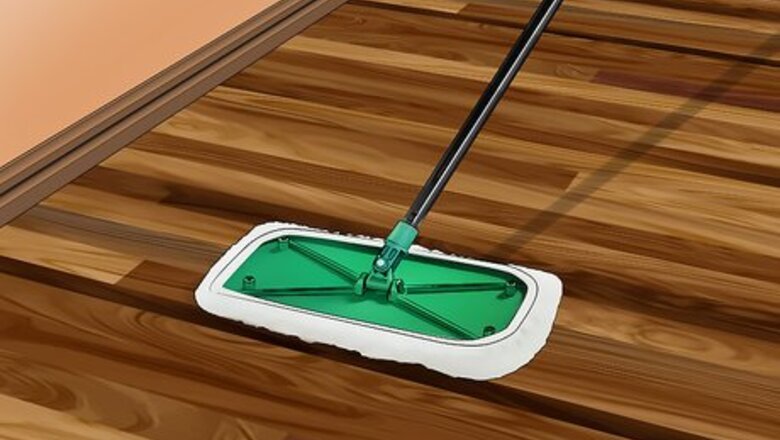
views
Picking Up Dust and Debris
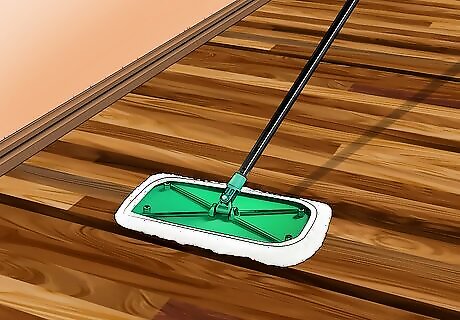
Sweep with a dust mop. You should sweep daily, and a dust mop is ideal. Simply run the dust mop over the floors to pick up any dirt and debris. Shake it out over the trash if needed.
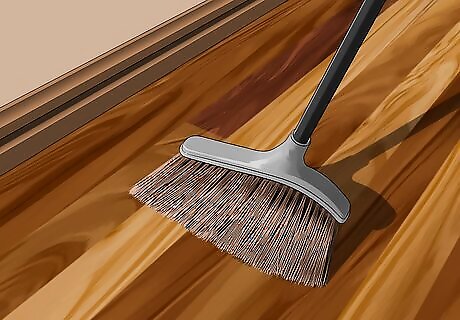
Sweep with a broom made for hardwood. If you prefer a bristle broom to a dust mop, you can certainly use one to clean your floors. However, look for one that has synthetic fiber ends (exploded tips), which will be the most efficient.
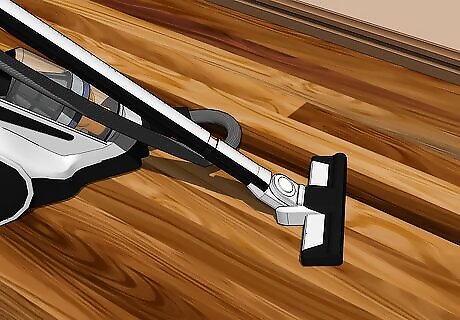
Vacuum often. You can vacuum hardwood floors as often as you'd like, though once a week is recommended. Simply set your vacuum to the setting for hardwood floors. If your vacuum doesn't have that setting, try turning off the beater bars and rotating brushes. You can also use a handheld soft brush attachment. This will help sweep up debris while being gentler on your floor than a beater bar. Vacuuming will pick up most of the dust and debris on your floor.
Damp-Mopping the Floor
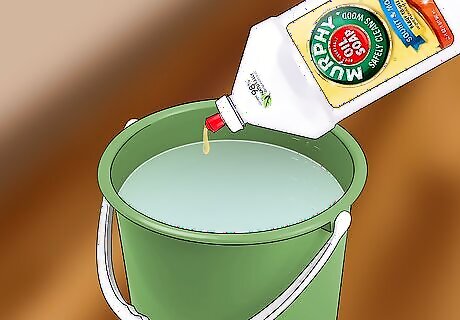
Mix up a solution of soap and water. The best soaps for polyurethane floors are mild, pH-neutral ones. For instance, you can simply use a capful of dishwashing soap or Murphy Oil Soap in a bucket of water. You can also use soaps specifically made for polyurethane hardwood floors.
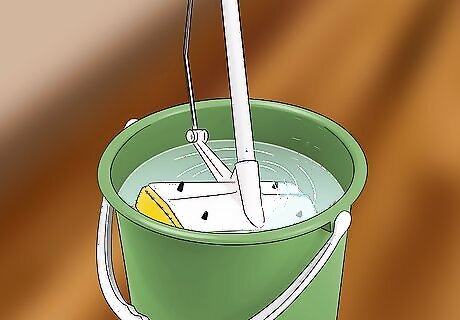
Get your mop wet. Once the solution is mixed together, dip your mop in. A sponge mop or microfiber mop works best, since they aren't as likely to scratch the coating. However, any fairly soft mop will work.
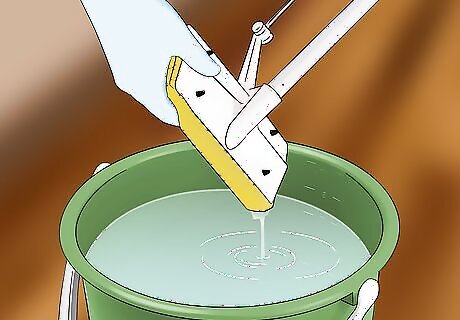
Wring out the mop completely. You want to apply as little water to the floor as possible, since standing water on the floor's surface is damaging. Squeeze out as much water from the mop as you can. Plus, you won't have as much water to clean up if you wring more thoroughly.
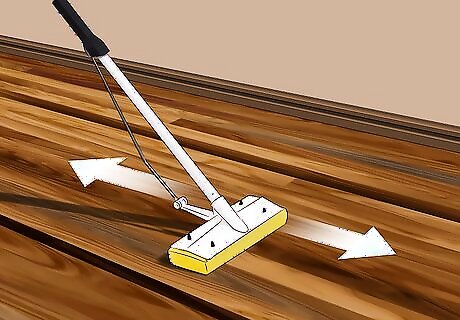
Use a damp mop on the floor. Mop the floor, following the grain of the wood. Following the grain will make it less likely that you'll leave streaks on the floor. Make sure to get as little water on the floor as you can. Also, change out the mopping solution if it gets dirty.
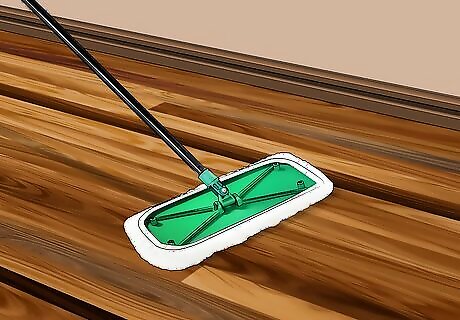
Dry the area. Once you're done, it can help to go over the area with a soft microfiber cloth. You can also use a dry microfiber mop to help pick up any extra moisture, as standing water can damage the floor.
Cleaning Up Spills
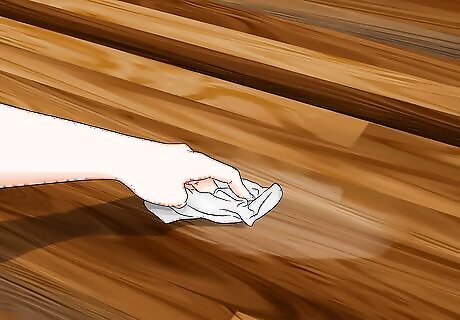
Clean up spills immediately. Spills are going to happen, no matter how careful you are. The key is to get them up quickly. Use a cloth to absorb the spill, then wipe up any residue with a damp cloth. Use another towel to dry it.
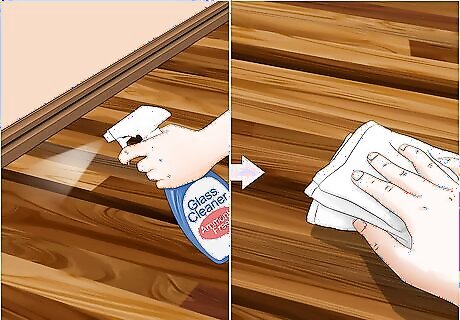
Try an ammonia-free glass cleaner. If you have a stubborn or dried spill, you may need a little more than a damp cloth. You can apply a window cleaner that doesn't have ammonia in it. Once the spill is up, make sure to wipe the area with a damp cloth to remove residue. You can also try a mild, pH-neutral cleaner for spills.
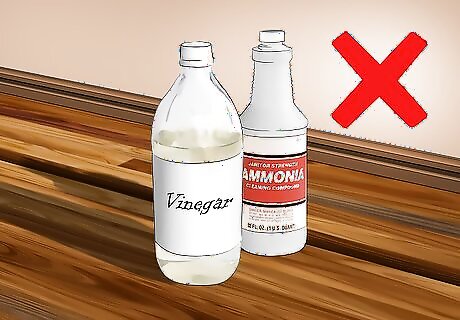
Skip vinegar and ammonia. While some people recommend diluted vinegar for cleaning your floors, it's best to skip acidic cleaners. They can affect the coating, which means your floors won't look as shiny and nice.
Maintaining Polyurethane Wood Floors
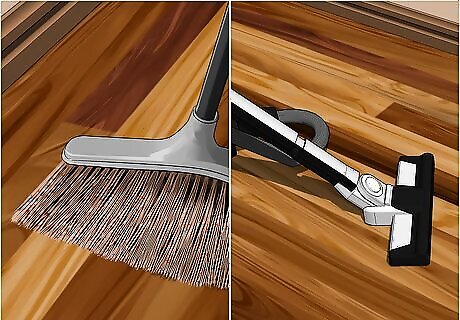
Clean regularly. When the floor builds up debris, that can lead to damage to your floor. Shoes will grind in the dirt, making scratches on the floor. Vacuuming and sweeping regularly can help prevent this problem.
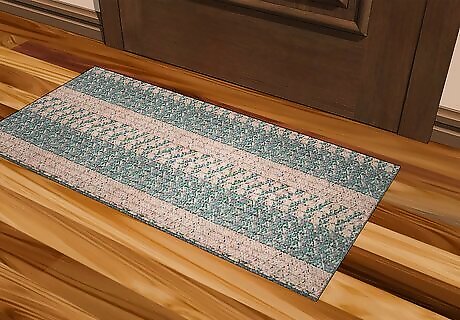
Add throw rugs at entryways. One of the main sources of dirt in your home is what's tracked in from outside on shoes. To help decrease the amount of dirt, bacteria, and toxins brought in, add welcome mats and rugs at the entryways, so the dirt can collect on them instead of your floors. It can also help to put a rug near your sinks to catch any water overflow.
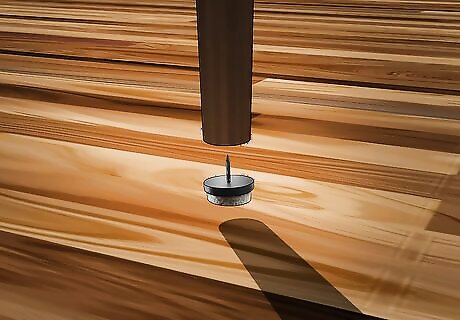
Prevent scratching from furniture with felt protectors. Furniture legs can cause scratches on your hardwood floors. To help prevent this problem, use felt protectors or furniture socks on the bottom of the legs, so that your furniture slides easily across the floor instead of scratching it. Similarly, don't walk over your floors with high heels or cleats, as they can cause dents. In fact, it can help to just remove all shoes at the door. Another way to prevent scratches is to make sure your pets' claws are always trimmed.
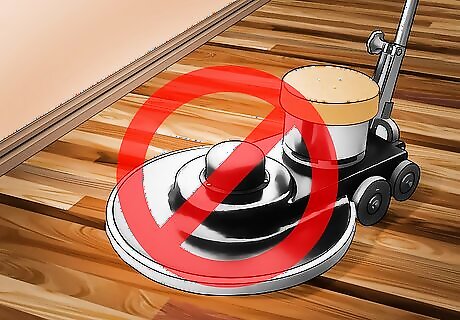
Don't buff, polish, or wax. Waxing these floors can make them too slippery to walk on easily. It can also make the floor dull more quickly. Similarly, you don't need to buff or polish these floors, as the polyurethane coating doesn't need it. Despite its durable finish, polyurethane flooring can start to wear out eventually. If this does happen, you can revitalize your floor with a restoring product (such as Minwax, Rejuvenate, or Bruce). In these circumstances, it can be helpful to screen or buff the floor before applying the restoring product.




















Comments
0 comment